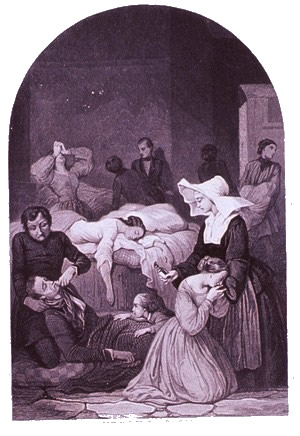 Pathology Review Guide
Pathology Review Guide
1. How are Koch’s postulates used to determine a cause of a disease? Consider scenarios where a suspected pathogen is present and how you would provide evidence for it being the causative agent.
2. What is pathology? Explain the difference between a pathogen and a disease considering terms like homeostasis and virulence.
3. Distinguish between:
disease and infectious disease
epidemic and pandemic
virus and bacteria
4. Explain how each of the following contributed to our understanding of pathology.
Alexander Fleming
Joseph Lister
Ignatz Semmelweis
Louis Pasteur
Robert Koch
Edward Jenner
Jonas Salk
5. What is a bacteriophage? Sketch a phage and identify its major structures showing how it reproduces within a host.
6. How does the structure of a virus relate to its functions. Sketch and identify these structures and their role in the lysogenic and lytic cycles.
7. How do vaccines work to protect us from viruses? Understand specific components of the immune system that makes vaccination possible.
8. What is the difference between DNA and RNA (retroviruses) viruses.
9. How does HIV invade a host cell and evade the host immune system? Review the coloring worksheet on HIV.
10. Explain how anti-viral drugs work by disrupting various stages of the viral life cycle.
11. What are the two kingdoms of bacteria and how are they different? How do prokaryotes differ from eukaryotes?
12. How are bacteria identified and classified (shape, gram stain)? You should be able to identify the three main shapes of bacteria: cocci, sphere, bacillus
13. Sketch a bacteria and label its major structures. (pili, flagella, capsule, cell wall, DNA, ribosomes, plamid)
14. Describe how bacteria reproduce (binary fission) and the three ways that new genetic material can be incorporated into the bacterial cell: transduction, transformation, conjugation.
15. Describe the major players (cells) that are involved in the body's immune response.
Helper T Cells | Cytotoxic T Cells | Memory B Cells
Antigen | Antibodies
Humoral vs Cell-Mediated Response
Leukocytes | Macrophages
16. How was the field of epidemiology developed from John Snow's research?
17. Understand the basics of how bacteria are studied and why it is important to follow aseptic technique. You learned this in the lab. You may also be asked about basic equipment and terminology related to this study.
